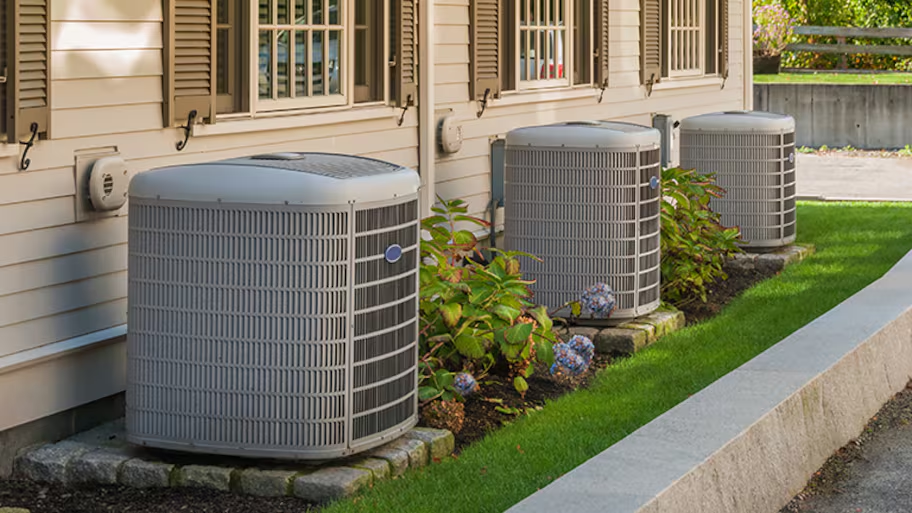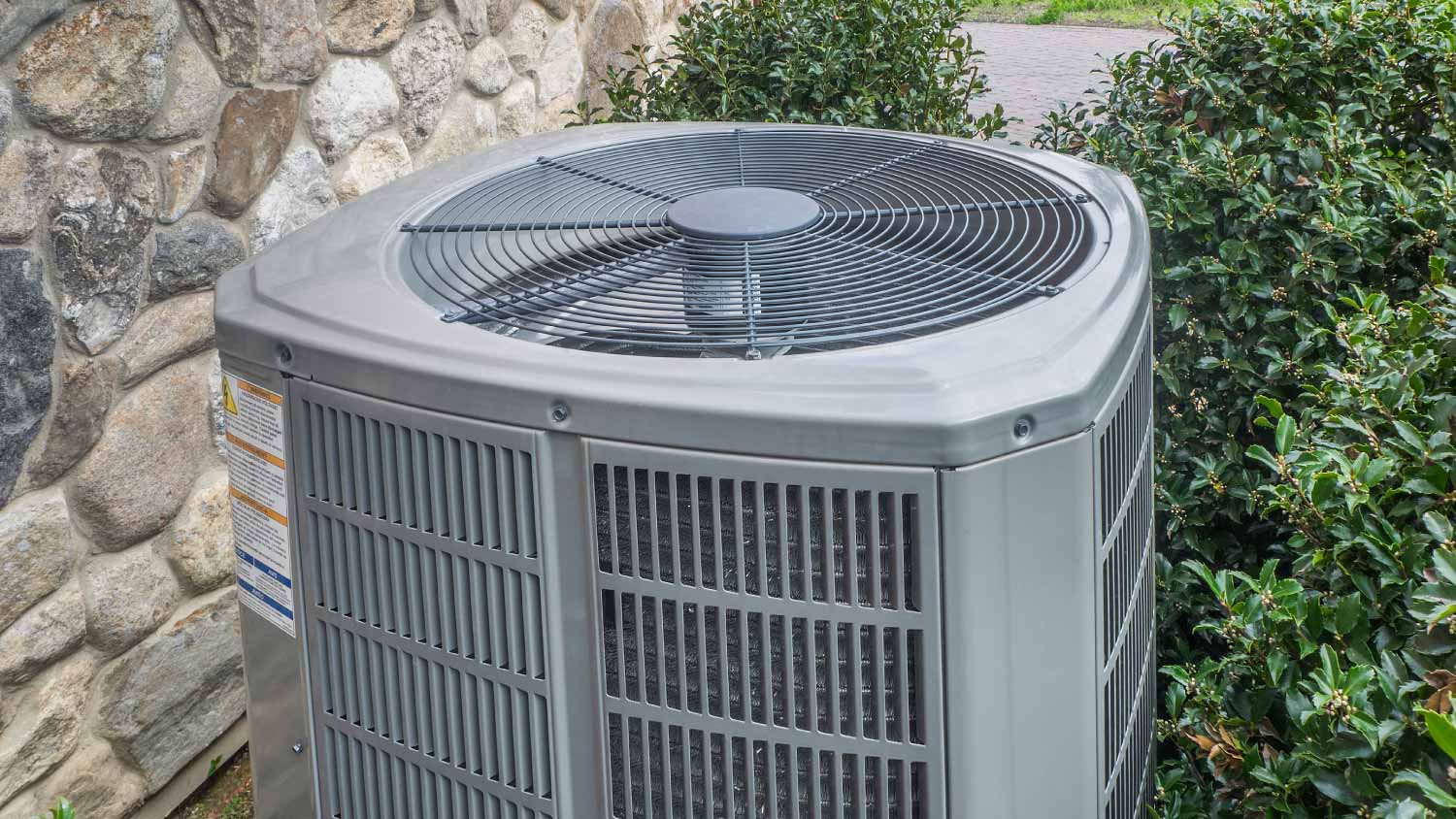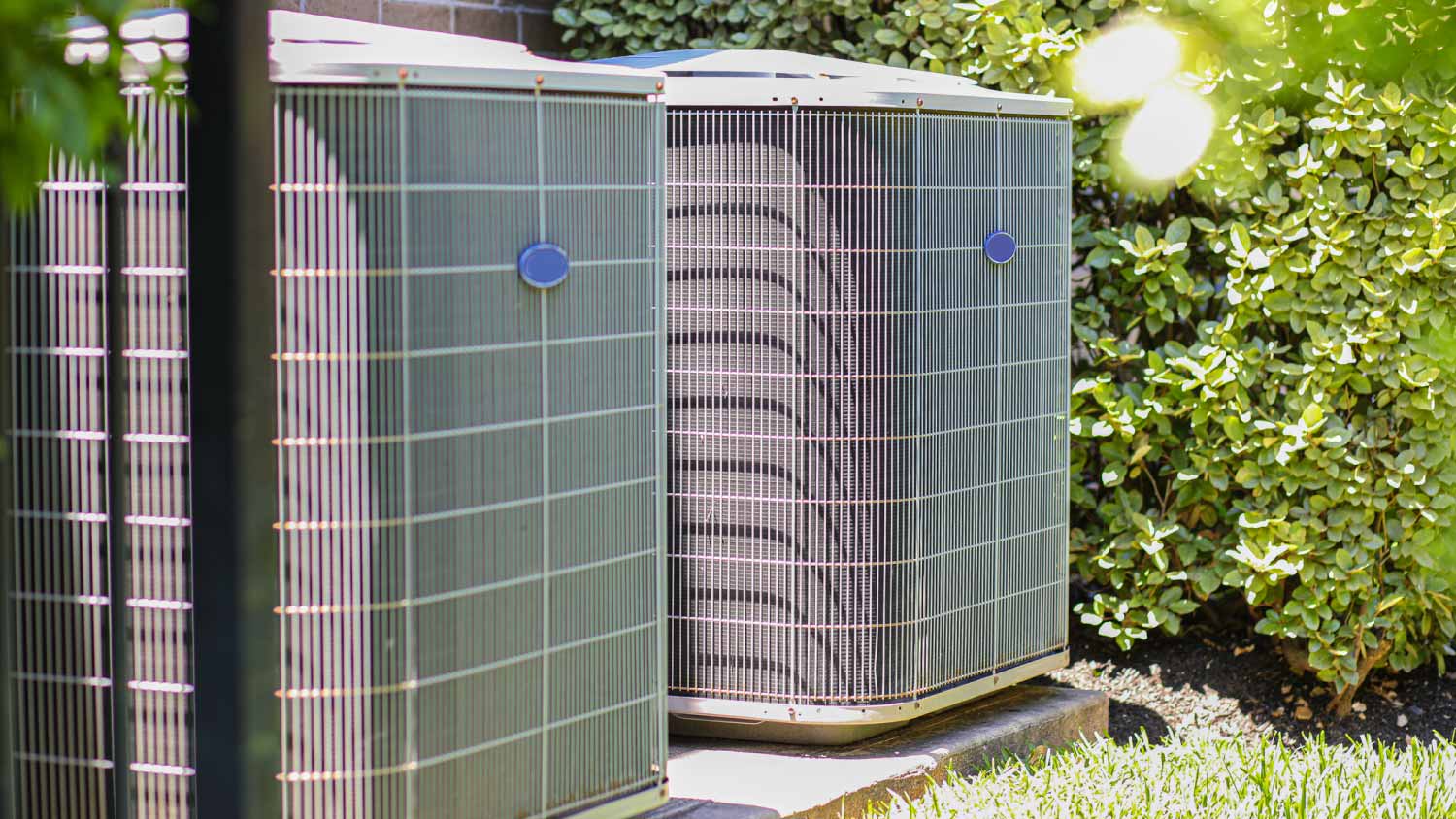
HVAC replacement costs depend on a lot of factors, like unit type, size, and labor. See what you can expect to pay for HVAC replacement here.
Which one will help you keep your cool?


A two-stage HVAC system is quieter and more efficient but costs more up front.
Single-stage HVAC systems are less expensive and may make sense if you live in a smaller home.
A two-stage HVAC unit may be worth the extra cost if your primary concerns are efficiency and indoor air quality.
If you’re looking for a longer-lasting unit with higher-quality parts, a two-stage HVAC unit is likely your best bet.
If you’re in the market to upgrade your cooling system, you’ll likely come across single-stage and two-stage HVAC systems. So, how do you know which one to choose? Factors like your budget, the size of your home, and your particular cooling needs can help you zero in on the ideal option for your unique situation. To help you with your decision, we’ve compared single-stage HVAC units to their two-stage counterparts below.
Single-stage HVAC systems only have one speed, and they’re the most common type of HVAC system used in homes. Two-stage HVAC systems have both a high and a low speed, and they automatically move into high speed if your home isn’t at the temperature set on the thermostat. Two-stage units are quieter and more energy efficient than single-stage units, but single-stage units cost less up front and are less costly to repair.

A single-stage HVAC system is the most common type of air conditioner available, and it has only one mode or speed. Once you install a single-stage HVAC unit, you can expect it to continually turn on or off throughout the day, depending on the temperature outside. It will run at full blast or 100% capacity until it reaches the desired temperature.
| Pros | Cons |
|---|---|
| Lower up-front cost | Less efficient |
| Faster to install | Can be noisy |
| Less costly to repair | May need to be replaced sooner |
Best for:
Smaller homes
Homeowners who are on a budget
Those who are less concerned about efficiency and noise
If you’re seeking a budget-friendly HVAC solution, a single-stage air conditioner may meet your needs. Not only is it less expensive up front, but it’s also cheaper to maintain and repair. A single-stage HVAC system is also faster and easier to install due to its smaller size and lighter weight.
The greatest drawback of a single-stage HVAC system is its inefficiency. Since it turns on and off many times throughout the day, it can waste a great deal of energy and, in turn, increase your utility bill. A single-stage unit may also be very noisy since it’s constantly running at full capacity. In addition, you might need to replace it sooner than you’d like to.

A two-stage HVAC system operates on two modes or speeds: high and low. It will kick into high gear if your home is much warmer than the temperature outside. If the temperature in your home is similar to the temperature outside, however, it will run at a low speed. In most cases, a two-stage HVAC system spends the majority of its time on the lower setting, only running at 60% or 70% capacity.
| Pros | Cons |
|---|---|
| More energy efficient | More expensive up-front cost |
| Better temperature control | Longer, more complex installation |
| Quieter | Higher repair costs |
Best for:
Larger homes
Homeowners who prioritize energy efficiency
Those who are concerned about air quality and allergies
Energy efficiency is the most notable advantage of a two-stage model. Since it can run on low or high mode, it uses far less energy, leading to better temperature control and lower utility bills. It also has a higher SEER (Seasonal Energy Efficiency Ratio) rating. A two-stage HVAC system can also operate fairly quietly, allowing for a more relaxing environment for you and your family.
While a two-stage HVAC system is very energy-efficient, it comes with a higher up-front cost that may not be in every homeowner’s budget. It will also take longer to install due to its heavier size and the complexity of the two modes. A two-stage HVAC system will be more expensive when you need an AC repair company.
When looking into single-stage versus two-stage HVAC systems, there are a few things to consider before reaching out to a local air conditioner installer. Since this is a long-term investment, you should weigh the pros and cons of each option to determine the best fit for you and your home. Below, we’ll take a look at which system comes out on top for up-front cost, energy efficiency, noise, air quality, and life span.
The up-front cost of an AC unit is usually a major concern for most homeowners. In this case, a single-stage HVAC system will be less costly than a two-stage one. On average, a two-stage system can run about 30% more, so you could be spending anywhere from $500 to $2,500 up front.
The extra money for a two-stage HVAC may be worth it if you’re looking for a quieter, more efficient one that may lower utility bills–especially if you live in a warmer climate that will get a lot of use out of the system.
As far as energy efficiency is concerned, a two-stage HVAC system takes the cake. Compared to a single-stage unit that always runs at 100% capacity, a two-stage unit only runs at 60% to 70% capacity. It won’t operate at high speeds unless it really needs to.
At the end of the day, most homeowners appreciate a peaceful, quiet space. If high noise levels are an issue for you, you should know that a two-stage HVAC system is much quieter than its single-stage counterpart. Sometimes, you may even forget it’s running.
Air quality is an important consideration if you’d like to keep yourself and your family healthy. Thanks to its improved airflow, a two-stage HVAC system can help prevent dust and other irritants from circulating throughout your home, along with routine air duct cleaning. It’s the best choice if you hope to improve your indoor air quality and keep allergy symptoms to a minimum.
On average, an HVAC unit lasts between 15 to 20 years. Due to their higher quality parts, two-stage HVAC systems tend to last closer to 20 years. This is particularly true if you invest in a unit from a reputable manufacturer and get it serviced on a regular basis.
Julia and her team are great! Easy to communicate with, reliable and professional!
My move was scheduled in a week. John and Frank at the office were so kind and easy to work with. Julio and the team moved swiftly and efficiently even though there were a lot of stairs. Thank you!
This business provided me with excellent timely and customer focused service for a repair to my aging residential AC system. It was a challenging repair but the technician was diligent professional and was able to spend the necessary time and focus to troubleshoot my system issues and get my...
The entire crew from the support hands, to the installers, to the staff that removed the old insulation up to the managers and owners were all involved and performed a near perfect job. Accuracy and knowledge of the job and the product was what sold me when they gave their estimate. Honesty...
I have had a lot of different services over the years for our home and our rental properties and I have never been more satisfied with any company than I have been with All Oklahoma Roofing and Construction. Not only did they finish the job on time but they did an excellent job, were...
They did a great job. They were prompt, professional, and friendly.
Amazing. I can't say enough good things about this company. After being up sold and lied to by another heat and air company in town my gut was telling me to call and get a second opinion. The original company told me it would cost 750 to replace the blower motor on my furnace plus the $128...
We were operating out of town, so everything was arranged via phone conversations. I was not able to see the finished product until a week later, and was I impressed. The work was beyond my expectations. I was speechless. The work was amazing. He even added a special touch that we had not...
From average costs to expert advice, get all the answers you need to get your job done.

HVAC replacement costs depend on a lot of factors, like unit type, size, and labor. See what you can expect to pay for HVAC replacement here.

Repairing ductwork in a crawl space is frustrating and difficult, which is reflected in the cost. Learn why limited access results in a premium cost beyond just a simple increase in labor hours.

If your furnace is malfunctioning, it could be a faulty control board. Find out what a furnace control board replacement costs for parts, labor, and more.

Forced-air systems provide a reliable source of warmth for your home, but what is forced-air heating, exactly? Let’s break it down.

While costly to install, heat pumps are an efficient and eco-friendly way to heat and cool your home, no matter the season.

Do you have a clogged AC drain line? We dig into the reasons behind those pesky blockages and how to clear them for optimal AC performance.